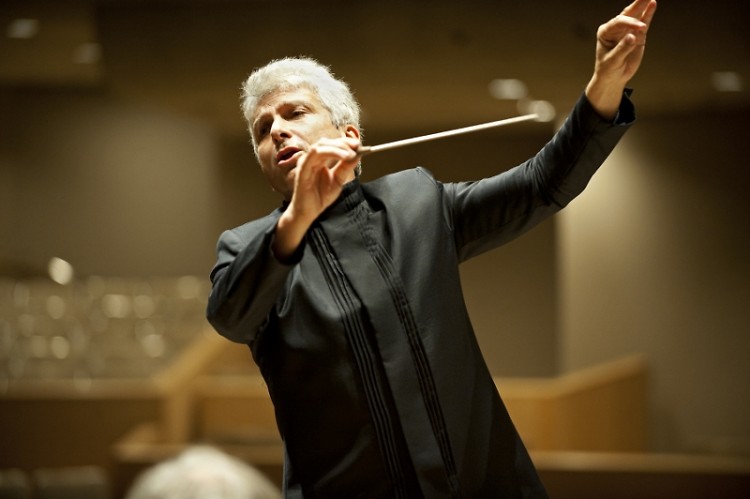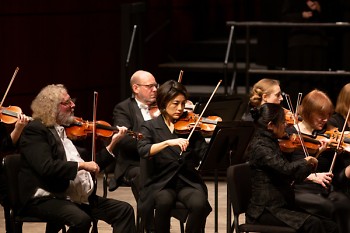Dmitri Shostakovich was one of the most subversive composers in the history of music who lived to tell the tale.
Under orders from the communist regime to produce a piece commemorating a peasant uprising against Tsar Nicholas II of Russia, Shostakovich composed his Symphony No. 11 “The Year 1905” to memorize the slaughter of more than 1,000 starving people by the palace guard.
The Soviet authorities were pleased with the work, premiered in 1957, that drew heavily on Russian folk melodies. But beneath the surface, the piece also was a searing indictment of the recent brutal suppression of an uprising in Hungary the year before against its community dictatorship.
“It’s really one of the most powerful pieces of music,” said conductor Peter Oundjian. “It’s one of my favorite pieces of music.”
The former Music Director of the Toronto Symphony Orchestra will lead the Grand Rapids Symphony in Shostakovich’s Symphony No. 11 on Friday and Saturday in DeVos Performance Hall, 115 years after the events of “Bloody Sunday” on Jan. 9, 1905.
Oundjian also will lead the Grand Rapids Symphony in Richard Strauss’ Serenade for Winds and Mozart’s Piano Concerto No. 22 in E-flat Major for the concert titled Shostakovich and Mozart, the fifth concert of the 2019-20 Richard and Helen DeVos Classical series.
Tickets, starting at $18 adults, $5 students, are available from the Grand Rapids Symphony at (616) 454-9451 or online at GRSymphony.org.
“The program is really incredible,” said Oundjian who first guest conducted the Grand Rapids Symphony in January 2004.
Pianist Jeffrey Kahane, among the finest American interpreters of Mozart, will be soloist for the Grand Rapids Symphony’s first Classical series concerts of the new year.
“He’s really quite a special guy,” said Peter Oundjian, who has been a friend and collaborator with Kahane since their college days more than 40 years ago.
The first half of the concert is like “dream music,” said Oundjian, whose career in music began as first violinist of the Tokyo String Quartet.
At its first performance in December 1786 in Vienna, the audience was so taken with the charming second movement of Mozart’s Piano Concerto No. 22, they demanded an encore of it on the spot.
“It’s an optimistic, absolutely stunning piece of music,” Oundjian said.
Shostakovich’s Symphony No. 11 recalled the events of series of worker strikes in St. Petersburg, Russia, that crippled the city during the winter of 1904-05. A priest led a huge procession of workers to the Winter Palace with a petition for Tsar Nicholas II. But the palace guard opened fire on the demonstrators and nearly 1,000 people were killed.
“It really tells the entire story of that particular day. Thousands of working-class people came to this square to beg the Tsar for food, for anything, and this tragedy happened, and they opened fire on them,” Oundjian said. “It’s unimaginably frightening.”
Shostakovich’s symphony, which is cinematic in scope, was composed to celebrate the 40th anniversary of the 1917 Russian Revolution. The Soviet authorities were pleased with the piece, which quoted Russian folk songs that were well known to the audience at its premiere in 1957. But beneath the surface, Shostakovich was calling out the communist regime, which brutally suppressed the 1956 Hungarian Uprising.
“It’s like watching a movie,” he said. “It really tells the entire story of that particular day.”
The Rapidian, a program of the 501(c)3 nonprofit Community Media Center, relies on the community’s support to help cover the cost of training reporters and publishing content.
We need your help.
If each of our readers and content creators who values this community platform help support its creation and maintenance, The Rapidian can continue to educate and facilitate a conversation around issues for years to come.
Please support The Rapidian and make a contribution today.


